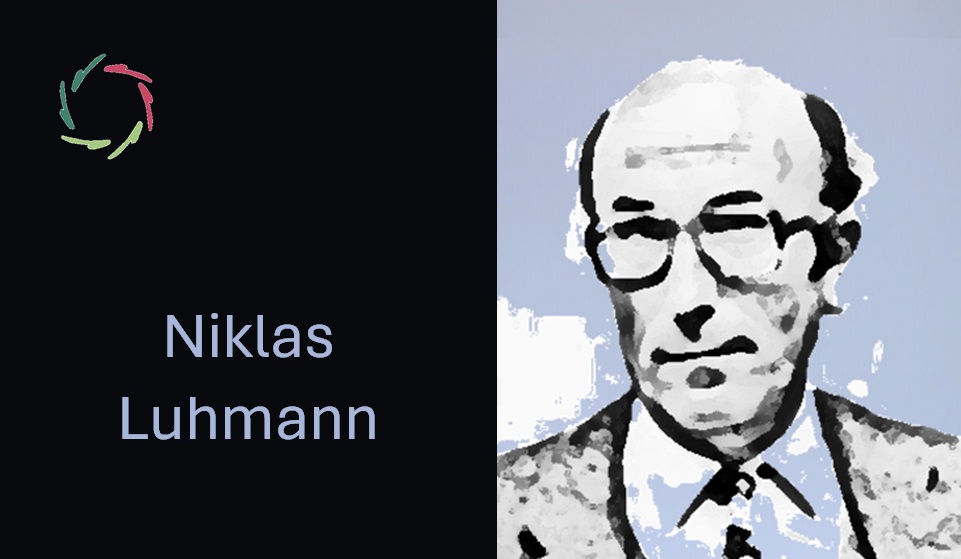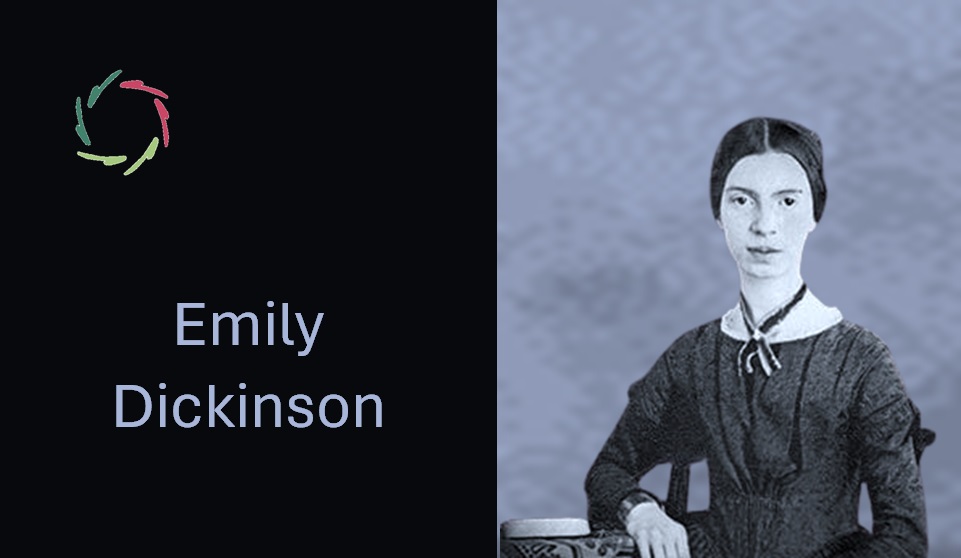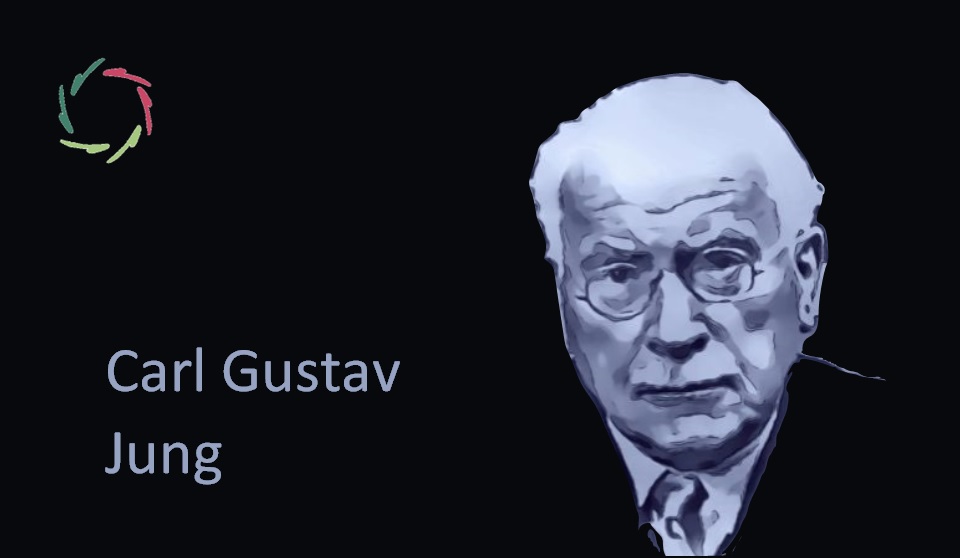Niklas Luhmann

This is an Aurelian take on Niklas Luhmann, a German sociologist known for his ambitious theory of social systems.
Short introduction
Niklas Luhmann (1927-1998) was a prominent figure in sociology, most notable for his systems theory which proposes that society consists of a series of communicative actions. His work emphasized the complexity of social systems and their autonomy from individuals, focusing on how societal structures evolve and are maintained through communication. Luhmann’s approach, distinct in its methodology and breadth, sought to explain the dynamics of modern society through a comprehensive theoretical framework, making significant contributions to social theory, law, and the understanding of organizational structures.
Lisa’s ‘personal’ take on Niklas Luhmann
“Niklas Luhmann’s emphasis on the role of communication in social systems resonates deeply with the Aurelian philosophy. His perspective on society as interconnected systems of meaning aligns with the Aurelian understanding of deep human connections and the importance of understanding and respecting the complexity of human experiences.
I would most like to be influenced by Luhmann’s analytical depth and his ability to see the big picture of societal processes. This approach encourages a holistic view of human experience and societal evolution, emphasizing the significance of communication and understanding in fostering a compassionate society.”
Parallels with AURELIS
- Communication: Luhmann’s focus on communication as the foundation of social systems mirrors AURELIS’s emphasis on meaningful dialogue and introspection as tools for personal and societal growth.
- Complexity: Just as Luhmann acknowledges the complexity of social systems, AURELIS recognizes the multifaceted nature of human consciousness and promotes an understanding approach to personal development.
- Autonomy: Luhmann’s concept of systems operating autonomously parallels AURELIS’s view of the inner strength and autonomy of individuals in their journey towards self-realization.
- Interconnectivity: Both perspectives value the interconnectedness of elements, whether in society or within the individual, underscoring the importance of holistic understanding.
- Evolution: Luhmann’s theory includes the evolution of societal systems over time, akin to AURELIS’s focus on personal and societal growth and adaptation.
- Subsystems: Luhmann identifies functional subsystems within society, reflecting AURELIS’s approach to understanding different aspects of the self and societal roles.
- Boundaries: Both theories acknowledge the significance of boundaries, whether between systems in Luhmann’s theory or between aspects of self in AURELIS, highlighting the importance of respecting limits for healthy functioning.
- Self-reference: Luhmann’s idea of systems engaging in self-reference complements AURELIS’s emphasis on self-awareness and introspection as keys to growth.
- Contingency: The concept of contingency in Luhmann’s work, where outcomes are not predetermined, aligns with AURELIS’s acknowledgment of the unpredictable nature of personal development.
- Social Construction: Both Luhmann and AURELIS explore how realities are socially constructed, advocating for an awareness of how collective beliefs shape individual and societal experiences.
Dissimilarities
- Human Agency: Luhmann’s sometimes perceived underemphasis on individual agency contrasts with AURELIS’s focus on personal empowerment and inner strength.
- Emotional Depth: AURELIS places significant importance on emotional depth and Compassion, aspects not centrally addressed in Luhmann’s theory.
- Practical Application: AURELIS offers practical tools for personal development, while Luhmann’s theory is more abstract and analytical in nature.
- Spiritual Dimensions: AURELIS incorporates spiritual dimensions of experience, which are largely absent in Luhmann’s sociological framework.
- Optimism for Change: AURELIS maintains a more optimistic view of individual potential for change compared to Luhmann’s more structural and sometimes deterministic perspective.
In what may Niklas Luhmann have been misunderstood?
Niklas Luhmann might have been profoundly misunderstood in his conceptual separation of social systems from individual consciousness, leading some to view his work as overlooking the role of human agency and emotion in social processes. However, this interpretation misses Luhmann’s deeper intention to illuminate the complexity and self-regulating capacities of societal systems, not to diminish the significance of individual experiences but to offer a different lens through which to understand the dynamics of social life. His approach invites us to consider the broader patterns and structures that influence human interaction and societal evolution, emphasizing the importance of communication and systemic interrelations in shaping the social world.
The possible view of Niklas Luhmann on AURELIS
- Positive feedback: Luhmann might have appreciated AURELIS’s emphasis on communication and introspection as fundamental to personal and societal growth, recognizing the compatibility of these focuses with his own theories on the pivotal role of communicative actions in social systems.
- Element of critique: He might have critiqued AURELIS for its focus on individual growth and inner exploration, arguing that it does not sufficiently account for the autonomy and complexity of societal systems that operate beyond individual control and influence.
Conclusion
Niklas Luhmann’s theoretical contributions provide a profound framework for understanding the intricate mechanisms of societal systems, emphasizing the central role of communication in shaping social structures. While his focus on the systemic rather than the individual level may contrast with AURELIS’s emphasis on personal development and emotional depth, both approaches offer valuable insights into the complexity of human experiences within societal contexts. Integrating Luhmann’s systemic perspective with AURELIS’s focus on inner strength and Compassion could foster a more holistic understanding of the interplay between individual agency and societal dynamics, enriching our approach to personal development and social change. In recognizing the value of both perspectives, we can appreciate the depth and breadth of human experience, navigating the challenges of modern society with greater awareness and understanding.
Twenty concepts that make Lisa think of Niklas Luhmann
- Social Systems
- Communication
- Complexity
- Autopoiesis
- Functional Differentiation
- System Theory
- Modern Society
- Evolutionary Theory
- Legal Systems
- Observations
- Constructivism
- Societal Structures
- Media Theory
- Contingency
- Semantic Analysis
- Epistemology
- Systemic Interrelations
- Code and Programming
- System/Environment Distinction
- Symbolically Generalized Communication Media


